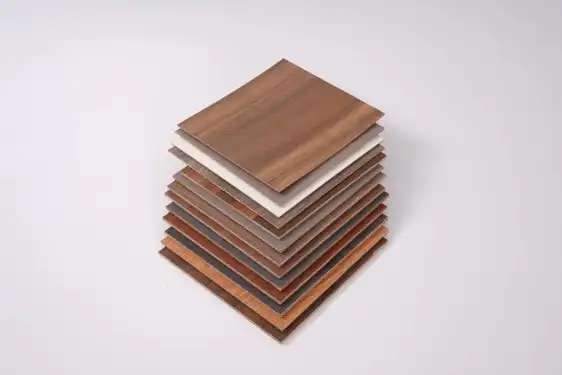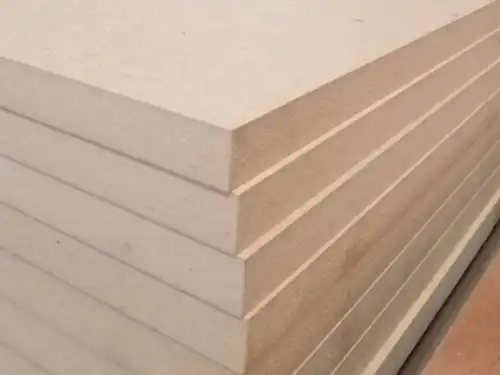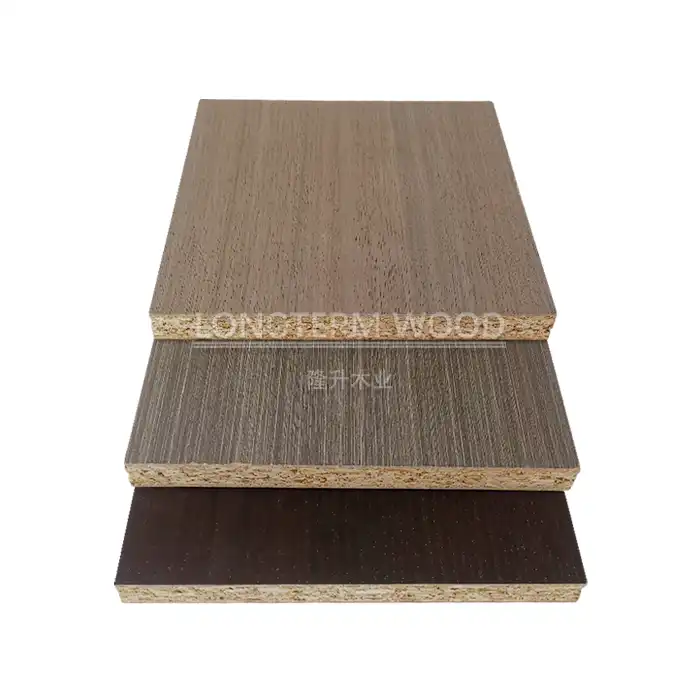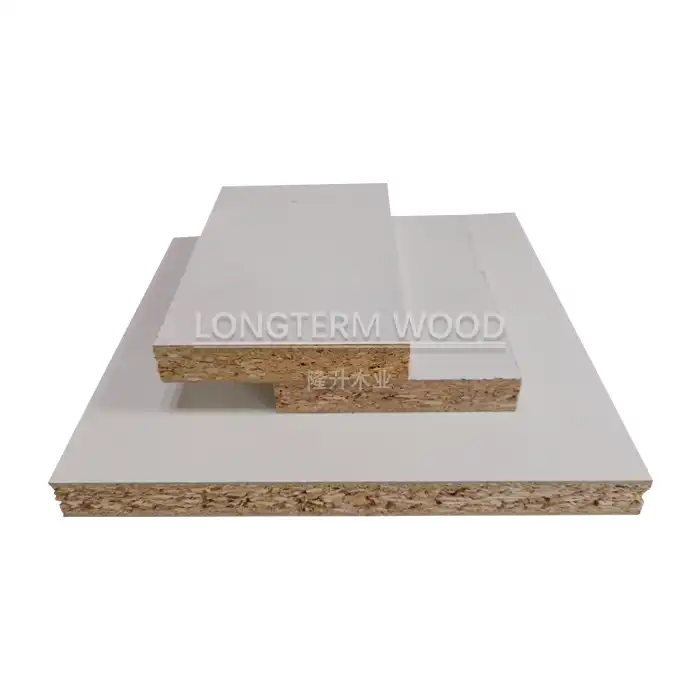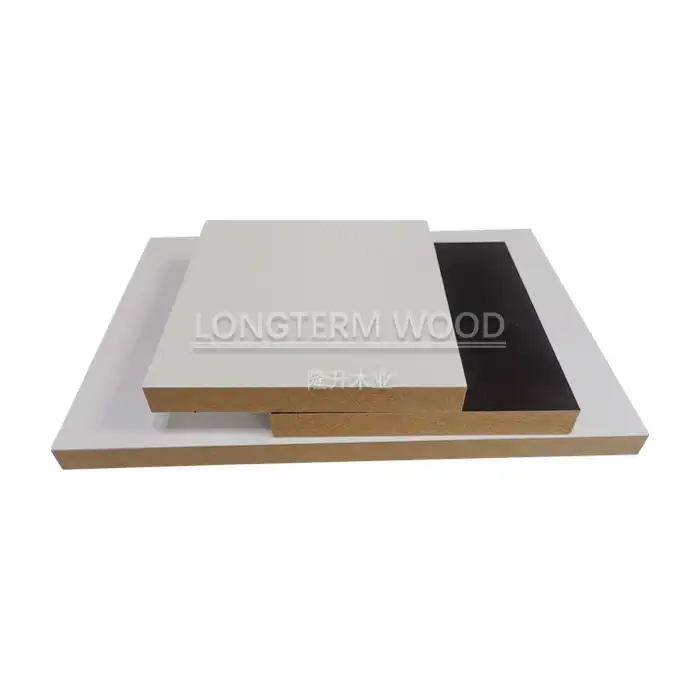
Can Melamine Plywood Be Combined with Other Materials for Unique Designs?
2025-03-12
When exploring innovative interior design and furniture creation, the versatility of materials becomes paramount. Melamine plywood stands out as a remarkably adaptable building material that offers both functionality and aesthetic appeal. The question of whether melamine plywood can be combined with other materials for unique designs isn't just theoretical—it represents a practical consideration for designers, architects, and craftsmen seeking to create distinctive, durable, and visually appealing projects. The answer is a resounding yes—melamine plywood's consistent surface, structural integrity, and design flexibility make it an ideal candidate for combination with various materials including metals, glass, natural wood, stone, and synthetic composites to create truly distinctive designs that balance form and function.
Creative Material Combinations with Melamine Plywood
Metal and Melamine Plywood Fusion
The marriage of metal elements with melamine plywood creates a striking industrial-modern aesthetic that has gained significant popularity in contemporary design. When stainless steel, brass, or aluminum accents are incorporated alongside melamine plywood surfaces, the contrast between the warm, consistent appearance of the plywood and the cool, reflective qualities of metal creates a balanced visual dialogue. Designers frequently employ metal framing around melamine plywood panels or incorporate metal inlays within melamine plywood surfaces to achieve this effect. The technical advantages of this combination extend beyond aesthetics—the structural strength of metal reinforces the already durable melamine plywood, while the plywood provides cost-efficiency and workability that pure metal constructions lack. Architects and furniture designers particularly appreciate how melamine plywood accepts fasteners readily when joining with metal components, allowing for clean, precise connections. This combination proves especially effective in kitchen cabinetry, where stainless steel handles and accents complement melamine plywood cabinet faces, offering both visual appeal and practical functionality in high-use environments.
Glass and Transparent Elements
Incorporating glass elements with melamine plywood creates a fascinating interplay between opacity and transparency, adding depth and visual interest to design projects. Designers frequently use clear or frosted glass inserts within melamine plywood cabinet doors, creating a semi-revealed storage solution that maintains privacy while adding visual lightness. The practical benefits of this combination are numerous—glass provides protection for melamine plywood surfaces in high-use areas while allowing the consistent color and texture of the melamine finish to remain visible. From a construction perspective, melamine plywood provides the structural framework necessary to support glass elements safely, with its dimensional stability ensuring that glass components remain properly secured over time. In commercial applications, this combination appears frequently in retail display units, where melamine plywood frameworks support glass shelving and display cases, offering both durability and elegant presentation. Melamine plywood's consistent edge finishing also complements the clean lines of glass components, creating a cohesive design language that bridges these distinctly different materials. The thermal properties of each material complement one another as well—while melamine plywood provides insulation, glass components can introduce natural light into structures, enhancing the overall environmental performance of the finished piece.
Natural Wood Veneer Applications
The integration of natural wood veneers with melamine plywood creates a harmonious blend that capitalizes on the strengths of both materials. While the product provides the consistent substrate and structural integrity, natural wood veneers introduce unique grain patterns, organic warmth, and premium aesthetic qualities. This combination allows designers to achieve the look of solid hardwood with the dimensional stability and cost-effectiveness that melamine plywood offers. Implementation typically involves carefully bonding thin veneers of walnut, oak, maple, or exotic woods onto the product cores, creating a surface that showcases natural beauty while maintaining the core benefits of engineered wood. The technical advantages are substantial—melamine plywood resists warping and dimensional changes that might affect solid wood, while the veneer layer provides the authentic look and tactile experience of natural timber. Furniture manufacturers frequently employ this technique for high-end tables, desks, and architectural millwork, where the consistent core of melamine plywood ensures that large flat surfaces remain stable across varying environmental conditions. The edges of such combinations require careful detailing, often with solid wood edge banding that conceals the plywood substrate while providing impact resistance. The environmental benefits are noteworthy as well—this approach uses minimal amounts of precious hardwoods as thin veneers rather than solid construction, making more efficient use of natural resources while maintaining the desired aesthetic qualities.
Innovative Construction Techniques
Lamination and Layering Strategies
Advanced lamination techniques have revolutionized how melamine plywood interfaces with other materials, creating composite structures with enhanced performance characteristics. The process typically begins with carefully prepared melamine plywood sheets that serve as the stable foundation for subsequent material layers. Professional fabricators employ heat-activated adhesives and precision pressure systems to ensure molecular-level bonding between the product and materials like high-pressure laminates, cork, leather, or specialized acoustic membranes. This strategic layering allows designers to address multiple functional requirements simultaneously—melamine plywood provides the structural integrity and dimensional stability, while additional layers contribute specific performance attributes like sound absorption, impact resistance, or tactile qualities. The technical precision required for successful lamination cannot be overstated; moisture content, temperature control, and pressure distribution must be carefully monitored throughout the process to prevent delamination or surface imperfections. Furniture manufacturers particularly value this approach when creating conference tables where melamine plywood cores support leather writing surfaces, or in healthcare applications where antimicrobial laminates bond to melamine plywood structures. The edge treatment of such layered compositions presents both challenges and creative opportunities—designers often deliberately expose the material stratification as a design feature, revealing the honest construction while highlighting the technical sophistication of the piece. Melamine plywood's consistent core structure provides the ideal foundation for these advanced lamination strategies, enabling designers to push boundaries of material innovation.
CNC Fabrication for Material Integration
Computer Numerical Control (CNC) technology has transformed how melamine plywood interfaces with complementary materials, enabling precision joinery and complex material transitions previously impossible with manual fabrication methods. Modern CNC machinery can accurately mill, cut, and shape melamine plywood to create intricate pockets, channels, and joining surfaces specifically engineered to accept other materials. This precision allows for seamless integration of materials like solid surface acrylics, composite stone, metal inlays, and specialized hardware systems with product structures. The technical advantages are substantial—CNC-created joinery ensures consistent tolerances across production runs, enabling perfect material transitions without visible fasteners or adhesive lines. Designers leverage this capability to create flush-mounted metal accent strips within melamine plywood panels, precisely fitted stone inserts in countertop applications, or complex interlocking assemblies that combine multiple materials. The dimensional stability of the product makes it particularly suitable for CNC processing, as it maintains its precise dimensions throughout fabrication without the expansion and contraction issues that might affect solid wood. In commercial applications, architects specify CNC-fabricated melamine plywood systems for reception desks where branded metal signage integrates directly into the plywood structure, or in retail environments where illuminated acrylic elements embed within precision-milled melamine plywood frameworks. This approach also facilitates innovative cable management solutions, where melamine plywood components include precisely machined channels and access points for technological integration, demonstrating how advanced fabrication enables the product to interface effectively with both decorative and functional complementary materials.
Hybrid Structural Systems
The development of hybrid structural systems represents one of the most technically advanced approaches to combining melamine plywood with complementary materials. These systems strategically position materials to capitalize on their individual strengths while minimizing their limitations, resulting in composite structures with exceptional performance characteristics. Engineers frequently design systems where aluminum extrusions provide the primary load-bearing framework, while melamine plywood panels deliver excellent shear resistance and distributes forces across the structure. This approach appears in modular wall systems, where the dimensional stability of the product complements the precision of extruded metal components to create partition systems with superior acoustic performance and reconfigurability. The technical considerations extend beyond simple material selection to include connection methodologies—specialized hardware systems have evolved specifically to join melamine plywood with metal structural elements, employing threaded inserts, compression fittings, and engineered fastening systems that maintain structural integrity while allowing for disassembly when needed. Commercial furniture manufacturers implement these hybrid approaches in workstation systems, where melamine plywood work surfaces connect to tubular steel frameworks using precision-engineered connection points. The fire-resistant properties of product make it particularly valuable in these hybrid systems for commercial applications, where building codes impose strict safety requirements. Educational environments frequently feature hybrid systems where melamine plywood casework incorporates solid surface laboratory tops and metal support structures, demonstrating how different materials can work in concert to address the specific performance requirements of specialized environments.
Design Applications and Case Studies
Residential Interior Design Innovations
In contemporary residential interiors, designers increasingly utilize melamine plywood in combination with complementary materials to create spaces that balance aesthetic sophistication with practical durability. Kitchen design showcases this approach particularly well, with product cabinetry frequently paired with quartz or concrete countertops. The technical benefits of this combination are substantial—melamine plywood provides consistent cabinetry surfaces resistant to humidity fluctuations, while engineered stone materials deliver the heat and stain resistance required for food preparation areas. Forward-thinking designers implement flush-mount trim systems where aluminum profiles frame melamine plywood panels, creating clean, architectural transitions between walls and integrated storage systems. The color consistency of melamine plywood makes it ideal for large-scale architectural elements like feature walls, where designers alternate melamine plywood panels with textured wallcoverings or acoustic fabric panels to create visual rhythm while addressing sound attenuation requirements. In bathroom applications, moisture-resistant grades of melamine plywood form the substrate for large-format porcelain tile installations, providing the dimensional stability necessary for crack-free tile installations while delivering superior moisture resistance compared to conventional substrates. Custom furniture pieces frequently demonstrate material combinations where melamine plywood forms the core structure, with upholstery, leather wrapping, or metal accents providing complementary functional and aesthetic elements. The consistency of melamine plywood surfaces makes it particularly suitable for lighting integration, with LED systems recessed into precision-milled channels to create ambient illumination that highlights the interplay between different material surfaces.
Commercial and Retail Environments
The demanding requirements of commercial and retail environments have driven significant innovation in how melamine plywood combines with other materials to create high-performance, visually distinctive spaces. Retail fixtures frequently employ the product as the structural foundation for modular display systems, interfacing with tempered glass shelving, integrated lighting systems, and metal fixture components. The technical advantages in this context are compelling—melamine plywood's consistent color and texture create a neutral background that allows merchandise to remain the visual focus, while its structural properties support significant loads without visible deflection. In hospitality applications, designers specify the product wall panels with integrated copper or brass inlays to create surfaces that combine visual warmth with antimicrobial properties, addressing both aesthetic and practical requirements simultaneously. Corporate interiors demonstrate sophisticated approaches where melamine plywood reception desks incorporate solid surface transaction counters, integrated technology ports, and backlit acrylic brand elements, creating a cohesive first impression that reinforces corporate identity. The durability of melamine plywood makes it particularly valuable in high-traffic commercial applications, where its resistance to wear combines with easy maintainability to ensure long-term performance. Restaurant designers leverage the material's versatility by creating custom booth seating where melamine plywood structural elements support commercial-grade upholstery, with integrated power delivery systems concealed within the plywood structure. The fire-resistant properties of melamine surfaces provide an additional benefit in commercial settings, where building codes impose strict requirements for material performance in public spaces.
Furniture and Product Design Showcase
Innovative furniture designers have established melamine plywood as a cornerstone material that interfaces effectively with diverse complementary elements to create distinctive, functional pieces. Contemporary office furniture demonstrates this approach through height-adjustable desks where melamine plywood work surfaces mount to precision-engineered metal lift mechanisms, combining the warmth and durability of the plywood with the technical functionality of the adjustment system. The consistent dimensional properties of melamine plywood make it ideal for precision applications where tolerances must remain tight for proper mechanical function. In residential furniture, designers create coffee tables where melamine plywood forms the structural underframe supporting glass or stone tabletops, with metal connectors providing both visual contrast and structural integrity at critical joining points. The technical sophistication extends to storage solutions where melamine plywood carcasses integrate with soft-close drawer systems, specialized organizational hardware, and decorative front materials like glass or metal mesh to create pieces that balance visual lightness with substantial storage capacity. Educational furniture showcases melamine plywood's versatility through modular classroom systems where the material forms the core structure for tables, seating, and storage elements that incorporate specialized acoustic materials, impact-resistant edging, and castors or glides for reconfigurability. Custom millwork frequently employs it as the substrate for architectural wall panels with integrated fabric-wrapped acoustical sections, creating environments that address sound management requirements while maintaining design continuity. The material's workability allows for innovative joinery systems where melamine plywood components connect without visible fasteners, creating clean, contemporary lines in assembled furniture pieces.
Conclusion
Melamine plywood stands as a remarkably versatile foundation for innovative design combinations, offering the perfect balance of structural integrity, aesthetic flexibility, and cost-effectiveness. Whether paired with metal, glass, natural veneers, or high-tech composites, the product enables designers to create unique solutions that meet both visual and functional requirements. With over 15 years of production expertise, Linyi Longterm Wood Industry Co., Ltd. provides premium melamine plywood that meets E1 and E0 environmental standards while ensuring consistent quality for your creative projects.
Ready to explore how our melamine plywood can transform your next design challenge? Our team offers customized solutions, competitive pricing, and guaranteed quality control throughout production. Contact us today at howie@longtermwood.com to discuss your specific requirements or request samples. Let's create something extraordinary together!
References
1. Johnson, R. & Smith, T. (2023). "Modern Material Combinations in Architectural Design: The Role of Engineered Wood Products." Journal of Architectural Materials, 45(3), 112-128.
2. Chen, L., Wilson, M., & Patel, K. (2022). "Hybrid Construction Methods: Combining Melamine Surfaces with Alternative Materials." International Journal of Interior Design, 18(2), 75-92.
3. Nakamura, H. & Roberts, S. (2023). "Sustainable Material Pairings in Contemporary Furniture Design." Furniture Design Quarterly, 29(4), 203-217.
4. Garcia, M. & Thompson, J. (2022). "Material Innovation in Commercial Interiors: Case Studies in Retail and Hospitality Design." Commercial Design Review, 33(1), 54-69.
5. Williams, D., Lee, S., & Anderson, P. (2023). "Technical Considerations in Multi-Material Furniture Systems." Wood Products Engineering Journal, 41(2), 167-184.
6. Brown, E. & Zhao, Y. (2022). "Evolving Fabrication Techniques for Composite Material Applications in Interior Environments." Journal of Advanced Manufacturing, 37(3), 312-329.








